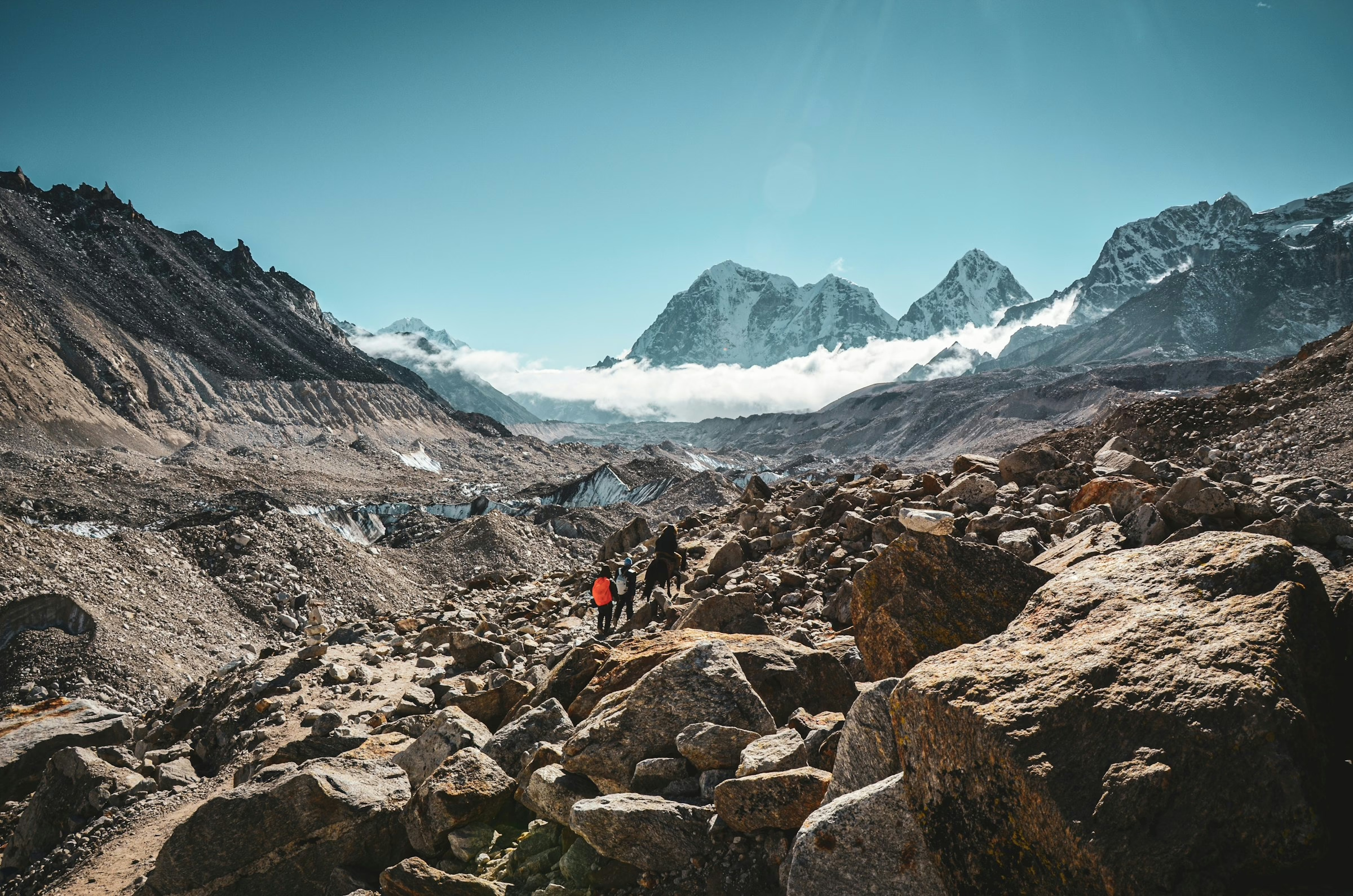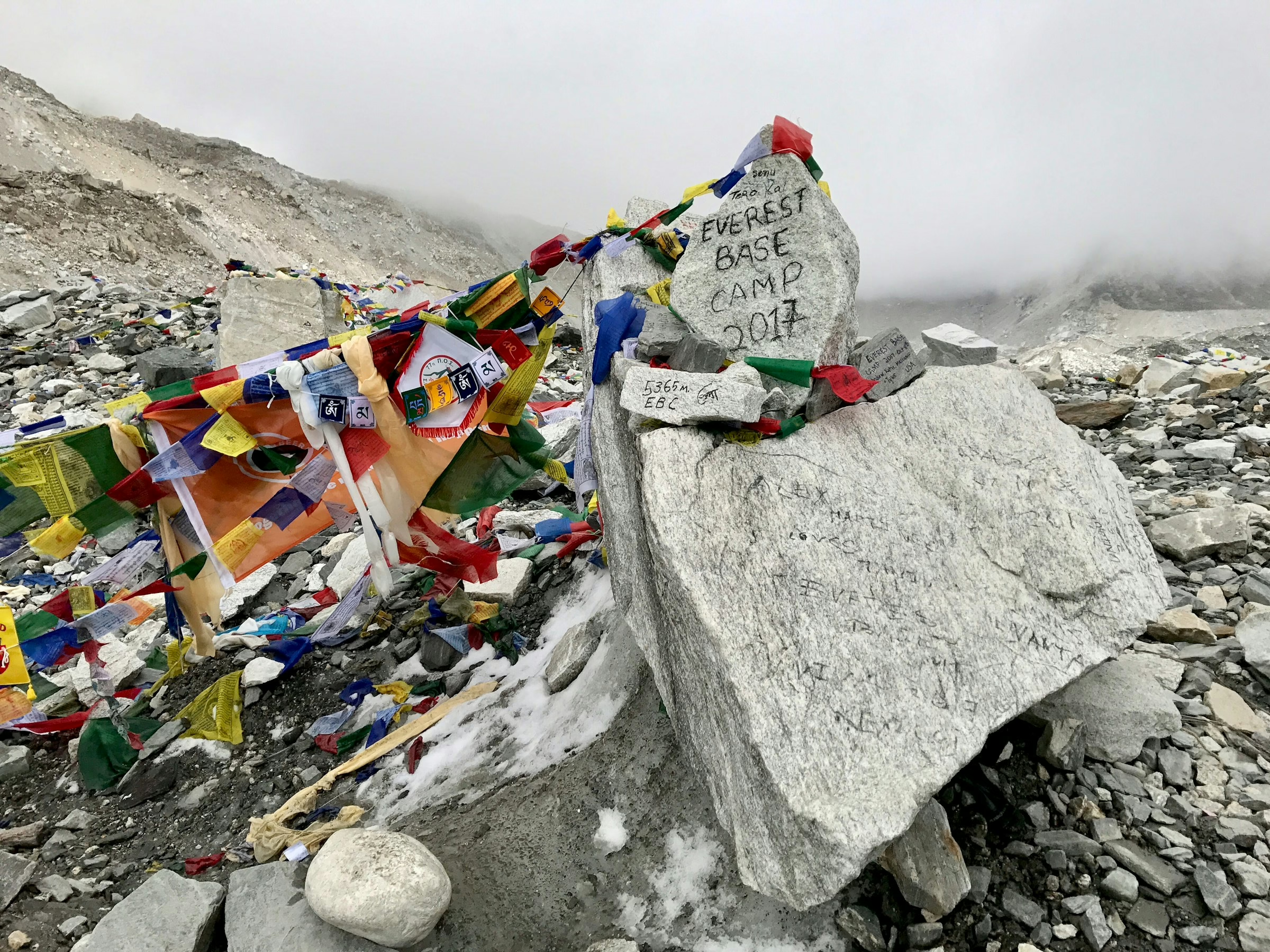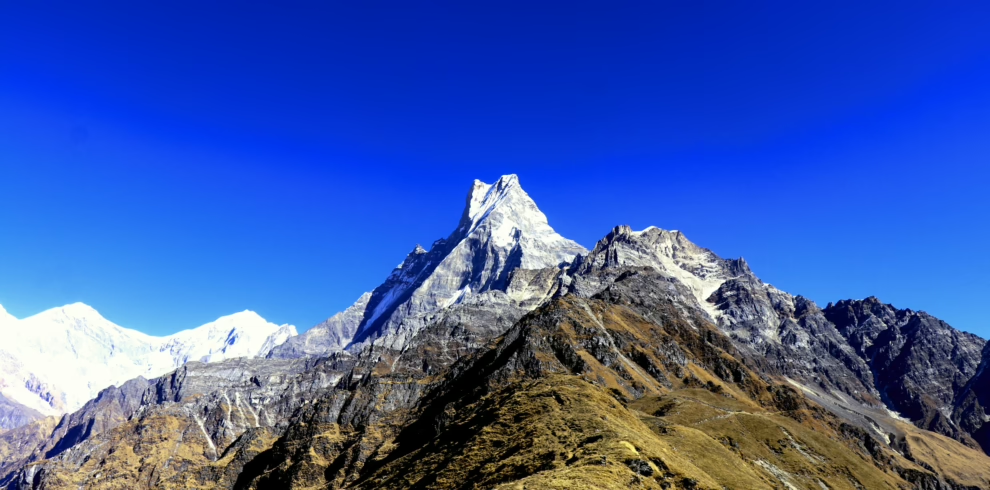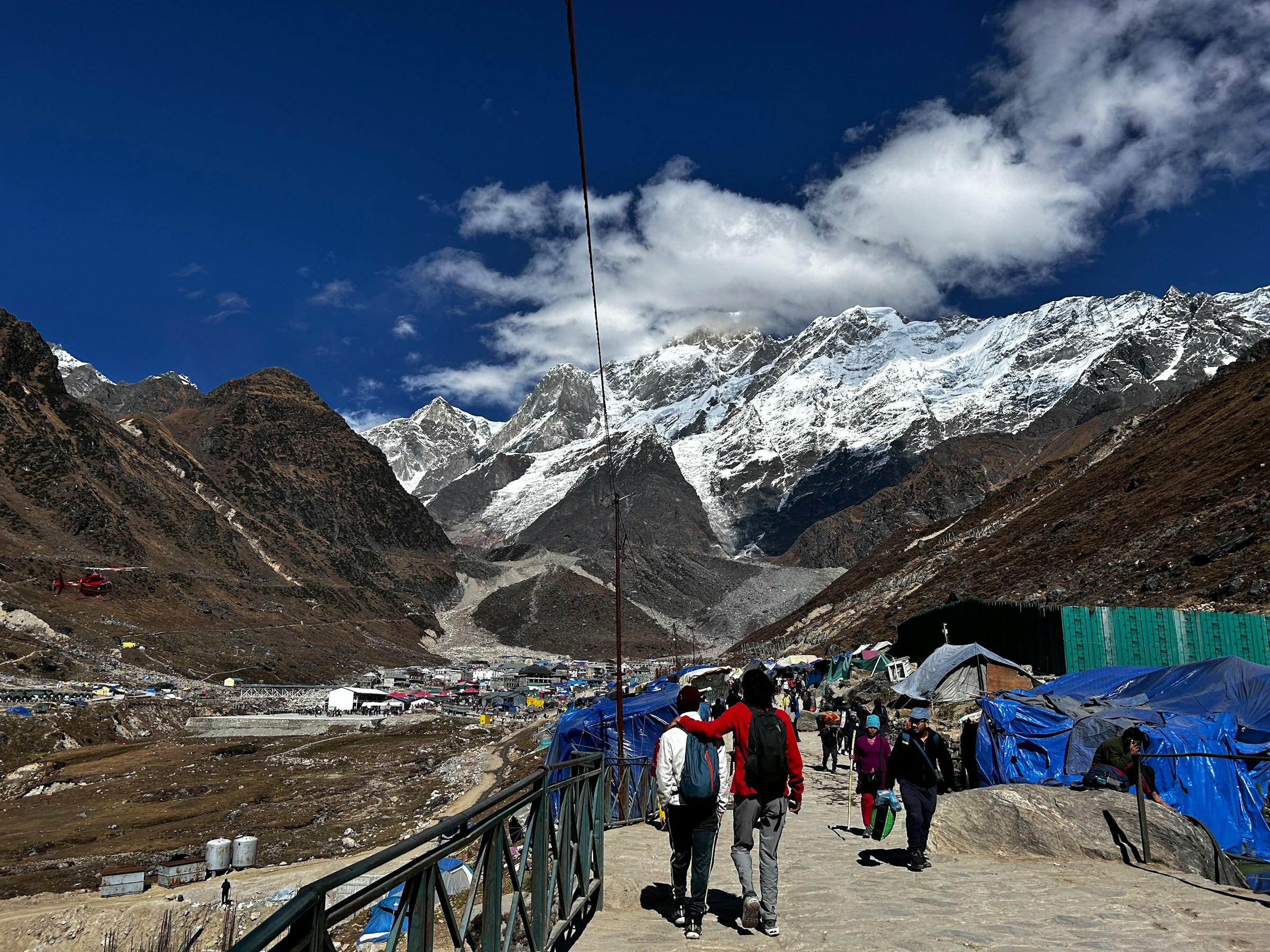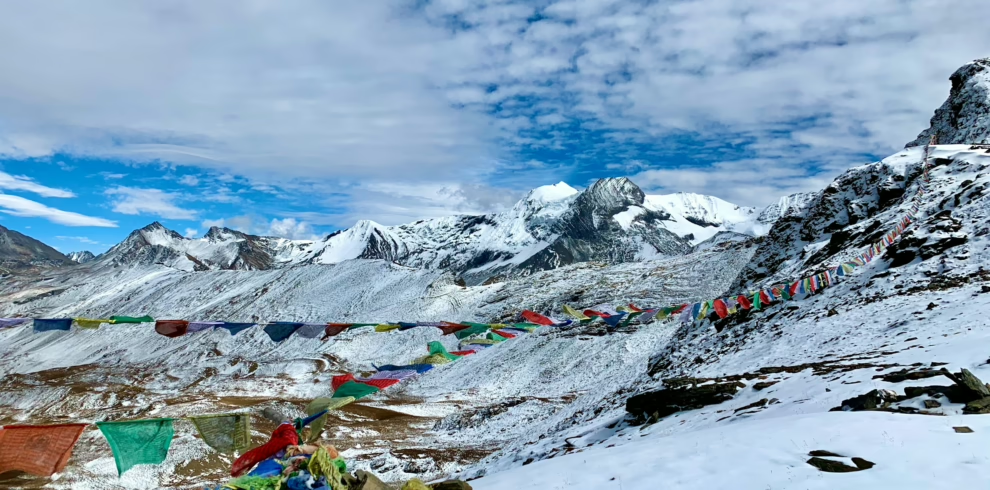If you’re short on time but not on trekking experience, the Rapid Everest Base Camp Trek is designed with you in mind. Offered by Green Lotus Trekking, this fast-paced itinerary delivers the classic Everest Base Camp experience without rest days for acclimatization—perfect for seasoned high-altitude hikers looking for a budget-friendly yet unforgettable journey.
This trek is not recommended for beginners. Due to the absence of acclimatization days, it’s only suitable for those who are physically fit and have previous experience trekking at high elevations. If you’ve successfully completed strenuous high-altitude adventures before, this is your chance to push your limits and reach Everest Base Camp in record time—without compromising on service quality.
9 days / 8 nights Short Everest Base Camp trip
A Journey Through the Sky in Everest
Highlights
- Scenic mountain flight from Kathmandu to Lukla
- Thrilling crossings over long, high suspension bridges
- Stunning sunrise and sunset views of Mt. Everest from Kala Patthar
- Clean, comfortable accommodations and hygienic meals throughout the trek
- Walks alongside the milky-white Dudh Koshi River and through vibrant rhododendron forests
- Exploration of Namche Bazaar—the gateway to Everest
- Views of the Khumbu Glacier and dramatic Khumbu Icefall
- Springtime blooms showcasing a rich variety of wildflowers
- Insight into Sherpa culture and warm local hospitality
- Visits to ancient monasteries and learning about Tibetan Buddhism
- Observing traditional mountain farming practices
Itinerary
Early in the morning, your trekking guide will pick you up from your hotel and Drive from Kathmandu to Ramechapp. At Ramechapp, you will board a scenic flight to Lukla—the starting point of your Rapid Everest Base Camp Trek. Upon arrival, you'll be greeted by stunning alpine landscapes and impressive mountain views. As the trek begins, you’ll spot Mt. Khumbila, a sacred, unclimbed peak, while descending gradually to the village of Cheplung. Continuing along the Dudh Koshi River, you’ll make your way to Phakding, where you'll spend the night surrounded by lush scenery and serene mountain views.
After a mountain breakfast, you’ll begin your trek to Namche Bazaar. The journey starts with a walk through a pine forest, followed by an ascent up the Benkar Valley. Before reaching the Everest National Park entrance, you’ll cross the Dudh Koshi River and pass through Monjo. Next, cross a suspension bridge into Jorsale village, where you may stop for lunch.
After a brief rest, continue alongside the Dudh Koshi and Bhote Koshi rivers to the Hillary Bridges. From there, the trail climbs steeply to Namche Bazaar, the largest settlement in the Everest region. The final stretch through a pine and rhododendron forest takes about two hours. Namche itself offers stunning views of the surrounding mountains.
After breakfast in Namche Bazaar, day three of the Short Everest Base Camp Trek begins. The trail offers stunning views of Everest, Lhotse, Ama Dablam, and Thamserku as you pass mani walls and stupas. After a two-hour trek to Phunge Tenga, a steep climb leads to Tengboche, home to the famous Tengboche Monastery. From there, continue to Deboche and eventually reach Pangboche, a picturesque spot with scenic views of the valley. In your free time, you can visit several monasteries in Pangboche.
After a hearty breakfast in Pangboche, you'll head toward Thukla. As you ascend to the Pheriche Valley, you'll enjoy even closer and more stunning views of the Himalayas. A 6-7 hour trek through this beautiful valley will offer an unforgettable experience. The Everest Short Trek is more challenging than the lower Khumbu Valley, so it’s important to pace yourself. You'll follow the Imja River to reach Dughla for the night.
After a hearty breakfast in Dughla, you'll begin a challenging ascent toward the Sherpa villages of Lobuche and Gorakshep, crossing the Khumbu Glacier. Once in Gorakshep, you'll drop off your gear and enjoy a quick meal before continuing to Everest Base Camp (5,364m). Spend time at the base camp with your team, then return to Gorakshep, trekking back over rocky moraine, glaciers, and streams.
Today, you will climb Kala Patthar, the highest point of the Everest Short Trek, at 5,555 meters. Check the weather before starting the 2-hour trek to this iconic viewpoint, where you can enjoy stunning views of the mountains in the morning light. After spending time at the summit, you'll return to Gorakshep for breakfast before descending to Pheriche.
After a hearty breakfast in Pheriche, you’ll begin your trek toward Namche Bazaar. The scenic route takes you through Debuche, a small village with a few teahouses, before continuing to Pangboche, where most trekkers stop for lunch. Afterward, you’ll hike uphill to Tengboche, then descend to cross a river. Following another ascent, you'll reach Namche Bazaar for the night.
Though today’s trek is long, it is relatively easy. Some hikers rush on the way back from base camp, increasing their risk of injury, as most accidents occur during this part of the journey. After crossing the Hillary Suspension Bridge, you'll begin the famous ascent from Namche. Gradually, you’ll hike alongside other trekkers, stopping for lunch at Tok Tok. Afterward, you'll continue your walk, with the excitement of heading back building as you near Lukla after several hours of trekking.
On your final morning in the Everest region, enjoy one last view of the mountains. The Quick Everest Base Camp Trek ends with a scenic 35-minute flight back to Ramechapp. Upon arrival, a Green Lotus Trekking agent will greet you and drive you back to Kathmandu. If you'd like to extend your stay, options such as a Chitwan jungle safari, river rafting, a Kathmandu shopping tour, or mountain biking are available. We’d be happy to arrange any of these at your request.
Includes/Excludes
Cost Includes
- One-way domestic flight from Kathmandu to Lukla, including airport transfers
- All necessary permits: Sagarmatha National Park, TIMS card, and local taxes
- 8 nights’ teahouse accommodation during the trek (twin-sharing basis)
- Three meals daily (breakfast, lunch, and dinner) during the trek
- English-speaking, First Aid and Eco-trained trekking guide (Lukla to Lukla) with medical kit; includes their insurance, salary, equipment, meals, and accommodation
- Return flight from Lukla to Kathmandu, including transfer to your hotel
- Certificate of achievement (on request)
- Farewell dinner in Kathmandu at the end of the trek
Cost Excludes
- International airfare, Nepal visa, and travel insurance
- Meals and accommodation in Kathmandu
- Porter service: Available at US$180 per porter (shared by two trekkers)
- Tips for guide and porter (customary and appreciated at the end of the trek)
FAQs
Altitude sickness is a real risk on the Short Everest Base Camp Trek, especially as you reach 5,555 meters at Kala Patthar. Symptoms commonly appear above 3,000 meters, making it essential to take proper precautions to minimize the risk.
Yes, you can safely store extra belongings at your hotel in Kathmandu or at our office. They will be securely kept and returned to you after the trek.
Yes, travel insurance is mandatory for international travelers in Nepal. You cannot obtain trekking permits for Everest Base Camp without it. Make sure your policy includes emergency coverage at altitudes up to 6,000 meters.
Yes, most teahouses along the route have electricity or solar power, allowing you to charge your devices at designated charging stations.
Yes, especially during peak seasons (autumn and spring) when flights, accommodations, and permits get fully booked. Early reservations ensure smooth arrangements.
To reduce the risk of altitude sickness (AMS), follow these tips:
- Ascend gradually
- Allow proper rest and acclimatization
- Stay hydrated
- Eat nutritious meals (garlic-rich soups are helpful)
- Take Diamox if prescribed
- Avoid alcohol, tobacco, and dairy products
This trek is ideal for experienced hikers with good fitness and prior high-altitude trekking experience. It’s especially suitable for those with limited time who want to complete the EBC trek in a shorter duration. Beginners may find it more challenging due to the lack of acclimatization days.
No. The route follows the same trail as the standard EBC trek, visiting all major landmarks including Namche Bazaar, Tengboche Monastery, Pangboche, Pheriche, Dhugla, Lobuche, Gorakshep, Kala Patthar, and Everest Base Camp. The only difference is the exclusion of acclimatization days.
Yes. You need a Sagarmatha National Park Permit and a Khumbu Pasang Lhamu Rural Municipality Permit. Green Lotus Trekking will handle all the necessary paperwork for you.
Cards are not widely accepted in the Everest region. ATMs are available in Kathmandu, where you can withdraw cash in Nepalese rupees. Note that ATMs usually charge a USD 5 fee, and daily withdrawal limits are around NPR 25,000 (approx. USD 215).
The highlight of the Rapid Everest Base Camp Trek is an early morning hike to Kala Patthar for a stunning sunrise over Mt. Everest and Nuptse. This trek follows the same route as the standard Everest Base Camp Trek but in a shorter timeframe and without the use of helicopter flights.
Your journey begins with a flight to Lukla, followed by trekking through the classic trail: Phakding, Namche Bazaar, Tengboche, Dingboche, Lobuche, Gorakshep, and Everest Base Camp. You’ll return to Lukla via the same path. The total distance covered is approximately 130 km—about 15 km per day.
Despite the condensed schedule, you’ll experience the Everest region’s breathtaking landscapes, traditional Sherpa villages, warm hospitality, and majestic Himalayan peaks.
What to Expect on the Rapid Everest Base Camp Trek?
Experience the warmth of Sherpa hospitality and gain insight into their unique way of life. The knowledge and care of your guides will enhance your journey and make it truly memorable.
Your trek begins in Lukla and follows the Dudh Koshi Valley through Namche Bazaar, ultimately leading you to the base of the world’s highest mountain. Along the way, you’ll pass through lush landscapes, fast-flowing rivers, remote Buddhist monasteries, glacial lakes, and awe-inspiring views of rugged, snow-covered peaks—including Mt. Everest itself.
For the best close-up view of Everest, a sunrise hike to Kala Patthar—or an optional extension to Gokyo—is highly recommended.
Expect to trek 4 to 10 hours daily across uneven, often steep terrain. The trail involves long ascents and descents, mostly on unpaved mountain paths.
Is the Rapid Everest Base Camp Trek Right for You?
Yes, absolutely—if you’re reasonably fit and have some experience with high-altitude hiking. Prior trekking experience is helpful, especially if you live near the mountains or already lead an active lifestyle. Strong physical stamina is essential, but mental strength and determination are just as important. This trek is best suited for those who are both physically and mentally prepared, enjoy mountain travel, and are ready to embrace the challenges and beauty of the Himalayas.
How to Prepare for the Rapid EBC Trek?
You don’t need to be an athlete to complete this trek—but you should be in good shape and have prior hiking experience. We recommend starting a regular training routine about 10 weeks before your departure.
Aim to walk 3–5 km daily, ideally on varied terrain with inclines. If you don’t have access to hills or mountains, activities like stair climbing, treadmill hikes, or swimming can help build stamina. Be sure to consult your doctor before beginning any intense training regimen.
To sum up: you don’t need to be a pro climber. You just need determination, a bit of prior trekking experience, and a love for the mountains. Once you say, “I’m ready for the Short Everest Trek!”—we’ll take care of the rest.
Useful Information for the 9 Days Short Everest Base Camp Trek
Best Time for the 9-Day Short Everest Base Camp Trek
The best seasons for the Short Everest Base Camp Trek are autumn (September to November) and spring (March to May). Autumn offers clear skies and excellent visibility for mountain views, while spring brings blooming rhododendrons and vibrant landscapes.
Trekking is possible in winter (December to February), but temperatures can drop to -30°C at night, and snow may make trails slippery. Monsoon season (June to August) is the least favorable due to heavy rain, flight delays, and difficult trail conditions.
Meals on the Rapid Everest Base Camp Trek
Throughout the trek, you’ll enjoy a variety of freshly prepared meals at local teahouses. Choices range from Nepali staples like dal bhat to international dishes such as pizza, fried noodles, spaghetti, and Swiss rosti. Beverages include tea, coffee, soft drinks, and alcohol—but avoid alcohol after Namche Bazaar due to high-altitude effects. Cozy cafés offering fresh pastries and coffee are available in Lukla, Phakding, Namche, Tengboche, Dingboche, and Lobuche.
Accommodation During the Trek
In Kathmandu, you’ll stay in a comfortable 3-star hotel (other options available upon request). On the trail, accommodation is in traditional teahouses—simple but welcoming lodges with basic facilities. Rooms are usually twin-shared with bedding (blankets, pillows, linens). As you ascend, amenities become more basic and limited.
Difficulty Level of the Short EBC Trek
The 9-day Rapid Everest Base Camp Trek is rated moderate to challenging. You’ll walk about 120 km round trip, averaging 4–7 hours per day over rugged terrain. The highest point is Kala Patthar (5,555m), where oxygen levels are significantly lower.
Due to the lack of acclimatization days, this trek is only recommended for experienced trekkers with good physical fitness and prior high-altitude experience. Regular training, good health, and following the itinerary closely are key to a successful trek.
Travel Insurance
Travel insurance is mandatory for this trek. It should cover high-altitude trekking, overseas accidents, and emergency evacuation (including helicopter rescue). Purchase insurance in your home country, as it cannot be issued in Nepal.
Altitude Sickness & Prevention
Altitude sickness is a serious risk above 3,000m. To prevent it:
- Ascend gradually and stay hydrated
- Avoid alcohol and smoking
- Consider using Acetazolamide (Diamox)—125mg two to three times daily as a preventive, or 250mg for mild symptoms
- If symptoms worsen, descend immediately with the help of your guide or porter
Common symptoms include headache, nausea, appetite loss, fatigue, dizziness, and sleep trouble.
Packing List for the Short EBC Trek
Though gear can be rented or bought in Kathmandu, we recommend bringing your own. Essentials include:
- -20°C sleeping bag (liner recommended)
- Duffel or rucksack with rain cover
- Thermal layers, fleece jacket, waterproof jacket
- Hiking shorts and pants
- Inner and wool socks
- Hiking boots and camp sandals
- Wool hat, sunglasses, lip balm, moisturizer
- Water bottles and purification tablets
- First aid kit and toiletries
Safety and Trek Guide Support
Safety is a top priority. The EBC trail is well-maintained but can have ice and snow through early April. Our team carries crampons and ice axes when needed. Bring any personal prescription medications.
Cell coverage and Wi-Fi (for a fee) are available at most teahouses, so you’ll stay connected throughout the trek.
Booking the Short Everest Base Camp Trek
Green Lotus Trekking is a government-licensed trekking company and a proud member of national and international travel associations. To book your spot:
- Pay a 10% deposit to confirm your trek
- The balance can be paid on arrival (cash or card)
- Submit your passport copy and travel insurance details at the time of booking
Join our adventure family and experience the journey of a lifetime on the Short Everest Base Camp Trek!

